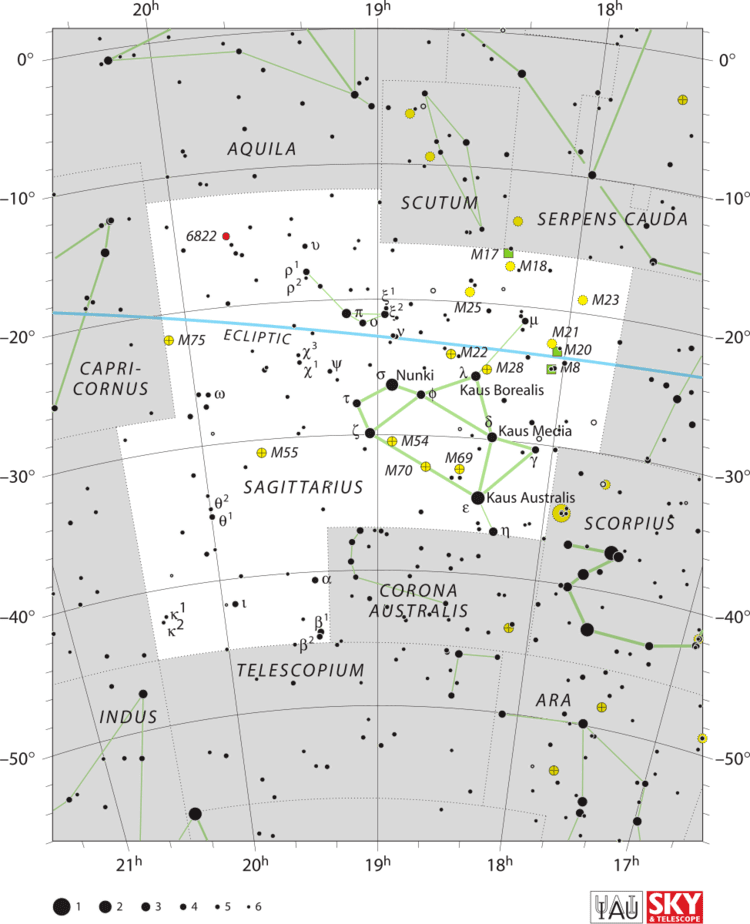Magnitude 3.1 | ||
 | ||
Similar Sagittarius, Delta Sagittarii, Omicron Sagittarii, Lambda Sagittarii, Gamma2 Sagittarii | ||
Eta Sagittarii (Eta Sgr, η Sagittarii, η Sgr) is a binary star system in the southern zodiac constellation of Sagittarius. Based upon parallax measurements, it is located at a distance of 146 light-years (45 parsecs) from Earth. It was formerly known as "Beta Telescopii" (β Tel). In India, where part of the constellation of Sagittarius represents an Elephant, this star forms the creature's tail.
The primary component, η Sagittarii A, is a red giant star with a stellar classification of M2 III. It is an evolved star that is currently at a stage called the asymptotic giant branch, having exhausted both the hydrogen and the helium at its core. This star is classified as an oxygen-rich irregular variable, as it undergoes small magnitude fluctuations between +3.08 and 3.12. The measured angular diameter of this star is 11.9 ± 2.1 mas. At the estimated distance of Eta Draconis, this yields a physical size of about 57 times the radius of the Sun.
The companion, η Sagittarii B, was first noted by American astronomer S. W. Burnham in 1879. The two stars share a common proper motion and hence are probably gravitationally bound to each other. The secondary is likely an F-type main sequence star with an apparent magnitude of +7.77. It located at an angular separation of 3.6 arcseconds from the primary, along a position angle of 108°. This star is at a projected distance of 165 Astronomical Units from the red giant primary and the pair take a minimum of 1,270 years to complete an orbit.
Within the context of the Milky Way galaxy, this system is a member of the faint old disk group. Because of proper motion, this star will move into constellation Corona Australis around 6300 CE. Eta Sagittarii has two optical companions that are not physically associated with the system. The first is a 10th magnitude star at an angular separation of 93 arcseconds with a position angle of 303°. There is a fainter, 13th magnitude star at an angular separation of 33 arcseconds along a position angle of 276°.
